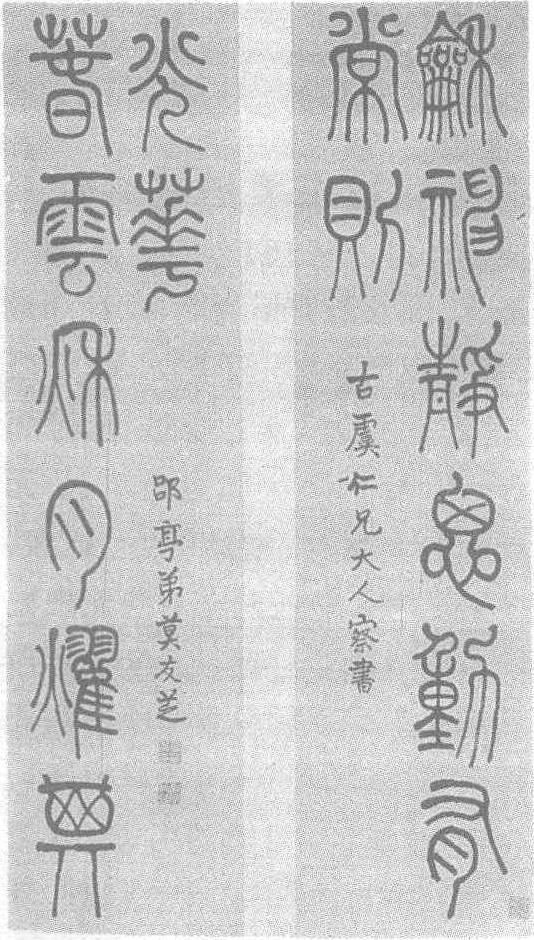莫友芝篆书八言联
清。纸本。纵126.2厘米,横32.6厘米。北京故宫博物院藏。莫友芝(清嘉庆十六年一同治十年,即公元1811—1871年),字子偲,号郘亭、眲叟,贵州独山人。道光十一年(公元1831年)举人。通故训六艺名物制度,旁及金石目录。治诗尤精。工书法,尤擅篆书,意态高古,自立门户,为晚清颇有成就的书家之一。杨守敬评:“子偲篆书学少宝碑,取法甚高。”此件作品,篆书八言联:“和神静思动有常则,春云秋月耀其光华。”字体古拙苍劲,运笔回转流畅,有金石气息,是其书法代表作。

莫友芝篆书八言联
沈阳故宫博物院藏品。此联兰龙蜡笺纸本,全长204厘米,宽46厘米; 心长164厘米,宽39厘米。八言篆书联:“燿此声香虽远犹近,纳我镕范有实若虚。”款署: “郘亭莫友芝”下钤:“莫友芝印”、“郘亭”,左下“亮丞审定”。其篆书联古拙有金石气,不以姿致取容,虽器宇稍隘,但不失其为美。莫友芝(1811—1871),字子偲,号郘亭,晚号眲叟,贵州独山人,清代书法家。